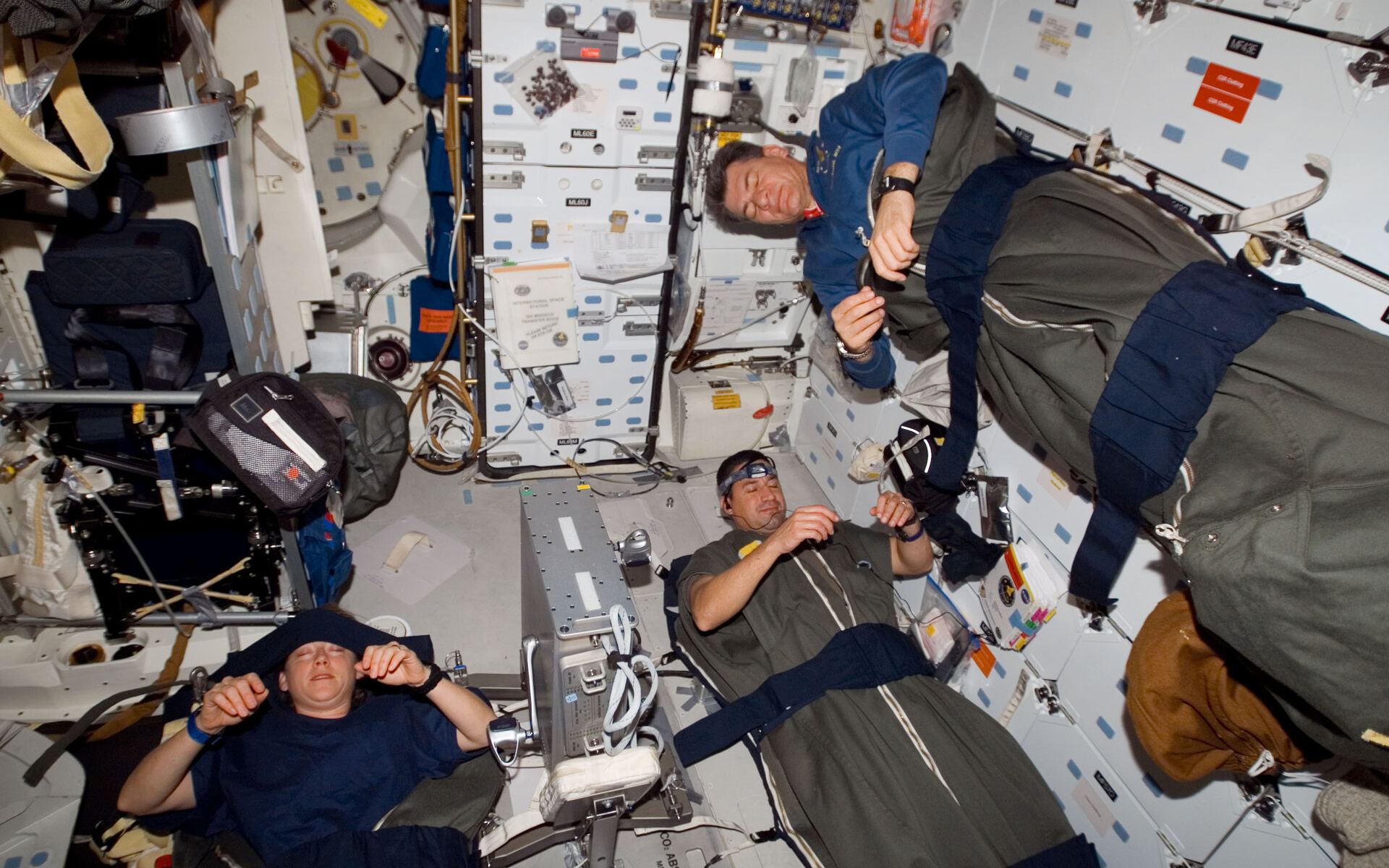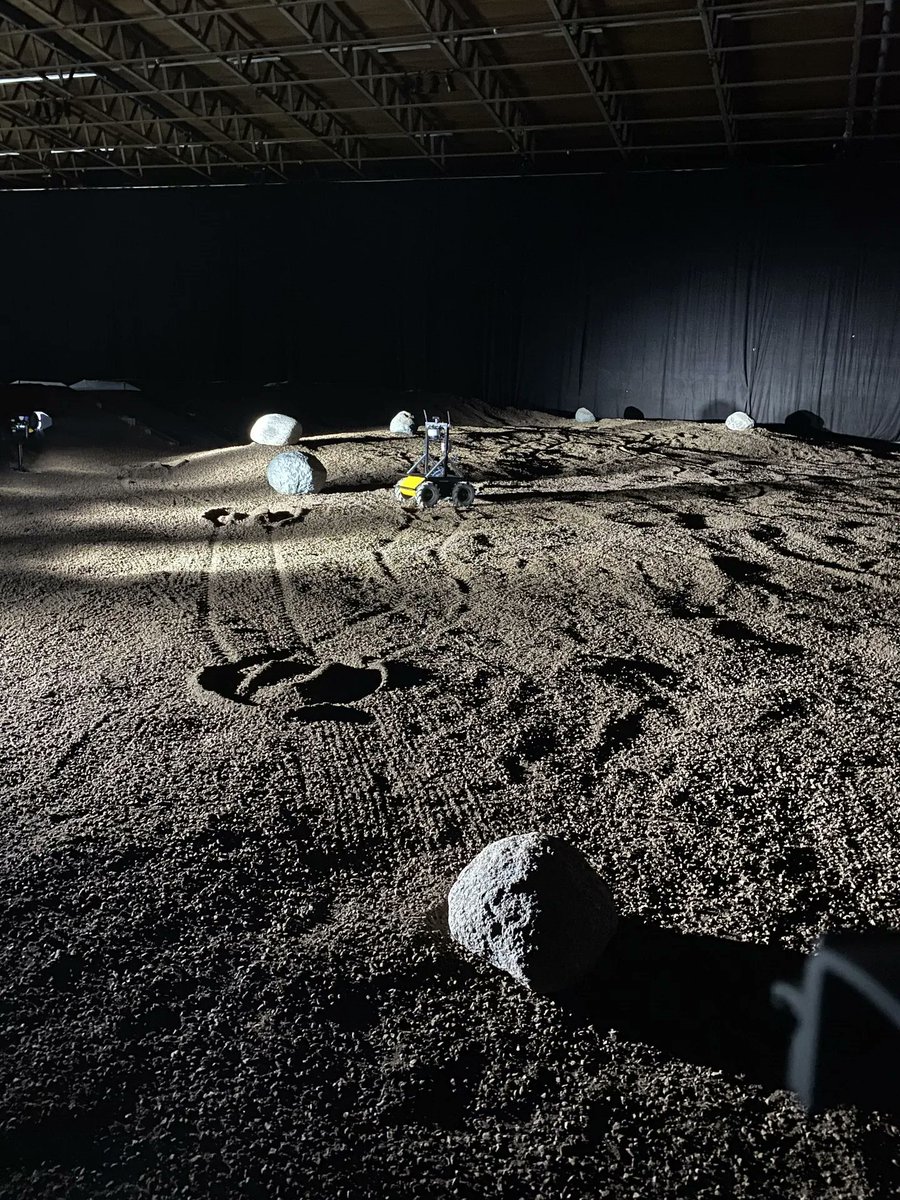Radar is finicky. It is extraordinarily useful for a multitude of tasks, but testing it for some particular tasks is complicated since almost everything interferes with it. That challenge is particularly acute when testing an antenna that is supposed to be used in space, which is why a team from the SENER engineering group in Spain decided to take a novel approach to testing the radar antenna the European Space Agency (ESA) plans to use for EnVision – they suspended it from a balloon.
Continue reading “Testing an Antenna That Will Float in the Atmosphere of Venus”Europe’s ExoMars Rover Will Likely Miss This Year’s Launch Window Because of Russia’s Invasion of Ukraine
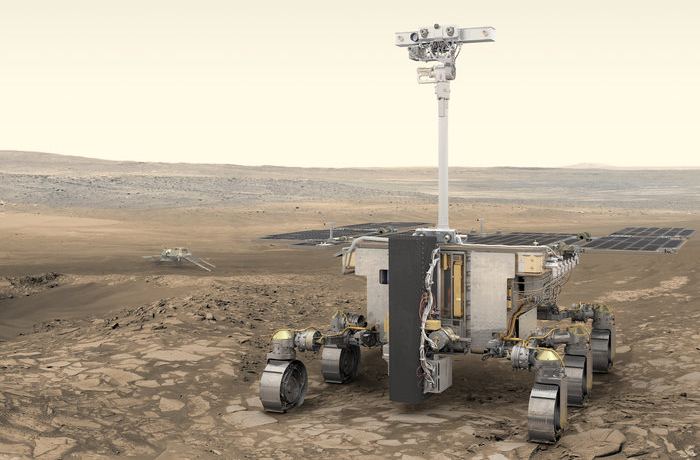
As countries around the world respond to Russia’s invasion of Ukraine with sanctions aimed at crippling Moscow and Vladimir Putin, the global cooperation in space exploration that has been forged over the past 30-plus years will certainly be impacted.
Continue reading “Europe’s ExoMars Rover Will Likely Miss This Year’s Launch Window Because of Russia’s Invasion of Ukraine”Satellites can now see Exactly Where Methane is Being Dumped Into the Atmosphere
Methane is one of the most important greenhouse gases, despite the overwhelming interest in carbon dioxide emissions as the primary source of climate change. It is hard to track, though, as its sources can range from leaking chemical and gas pipelines to literal farm fields. Now an energy analytics company has a system they believe can track otherwise undocumented methane emissions in a way that could prove helpful in eliminating them altogether.
Continue reading “Satellites can now see Exactly Where Methane is Being Dumped Into the Atmosphere”Could Astronauts Hibernate on Long Space Voyages?
A renewed era of space exploration is upon us, and many exciting missions will be headed to space in the coming years. These include crewed missions to the Moon and the creation of permanent bases there. Beyond the Earth-Moon system, there are multiple proposals for crewed missions to Mars and beyond. This presents significant challenges since a one-way transit to Mars can take six to nine months. Even with new propulsion technologies like nuclear rockets, it could still take more than three months to get to Mars.
In addition to the physical and mental stresses imposed on the astronauts by the duration and long-term exposure to microgravity and radiation, there are also the logistical challenges these types of missions will impose (i.e., massive spacecraft, lots of supplies, and significant expense). Looking for alternatives, the European Space Agency (ESA) is investigating hibernation technology that would allow their astronauts to sleep for much of the voyage and arrive at Mars ready to explore.
Continue reading “Could Astronauts Hibernate on Long Space Voyages?”Astronomers Finally Find a Second Asteroid in Earth’s Trojan Belt

Earth has a new companion. Asteroid 2020 XL5, a newly discovered kilometer-wide carbonaceous space rock, has been discovered at Earth’s L4 Lagrange point – a place where the gravitational forces of Earth and the Sun balance out, creating a stable point in which objects can become trapped. A new paper published this week in Nature Communications confirms that 2020 XL5 will be stuck at L4 for at least another 4000 years, shepherded silently through the Solar System by the gravitational tug of our home planet.
Continue reading “Astronomers Finally Find a Second Asteroid in Earth’s Trojan Belt”Rings Inside a Martian Crater Reveal its Ancient History
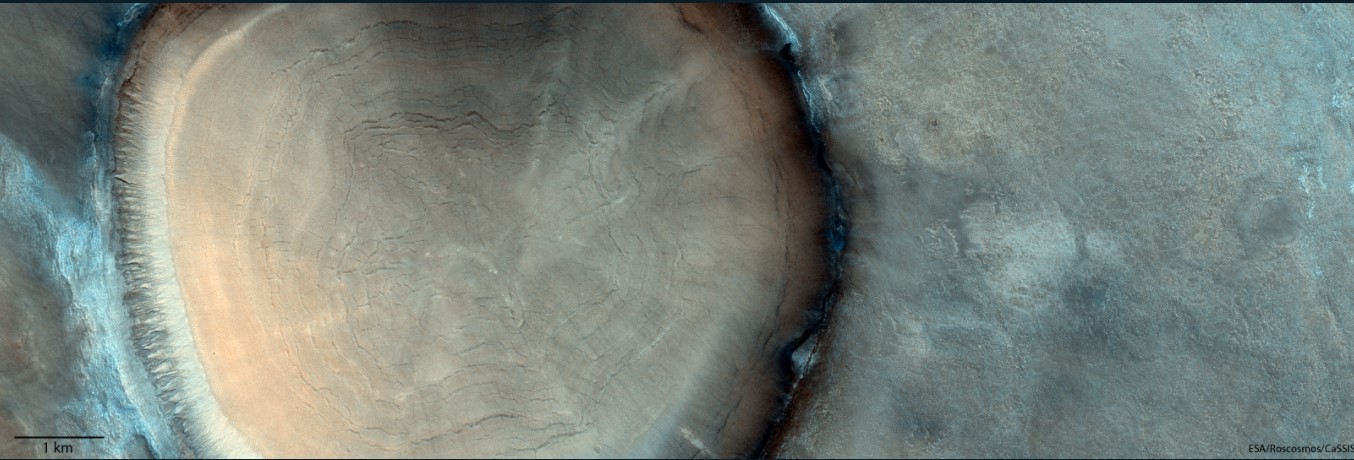
Is this a closeup look at a tree stump, or an orbital view of an impact crater? At first glance, it might be hard to tell. But this image of a crater on Mars provides planetary scientists almost the same kind of climate history data about the Red Planet as tree rings provide to climate scientists here on Earth.
This picture was taken by the Colour and Stereo Surface Imaging (CaSSIS) camera onboard the ESA/Roscosmos ExoMars Trace Gas Orbiter (TGO), which arrived at Mars in 2016 and began its full science mission in 2018.
Continue reading “Rings Inside a Martian Crater Reveal its Ancient History”13 Rovers Recently Competed to Scour the (Simulated) Moon to Harvest Resources
Challenges are one way to encourage innovation. They’ve been leveraged by numerous space and non-space research organizations in the last decade, with varying degrees of success. The European Space Agency (ESA) is now getting in on the action, with a challenge to prospect the moon for vital resources that will make a sustainable presence there possible. Recently thirteen teams from all over the continent (and Canada) competed in a gloomy hall in the Erasmus Innovation Centre in the Netherlands.
Continue reading “13 Rovers Recently Competed to Scour the (Simulated) Moon to Harvest Resources”ESA’s ARIEL Mission Will Study the Atmospheres of More Than 1,000 Exoplanets
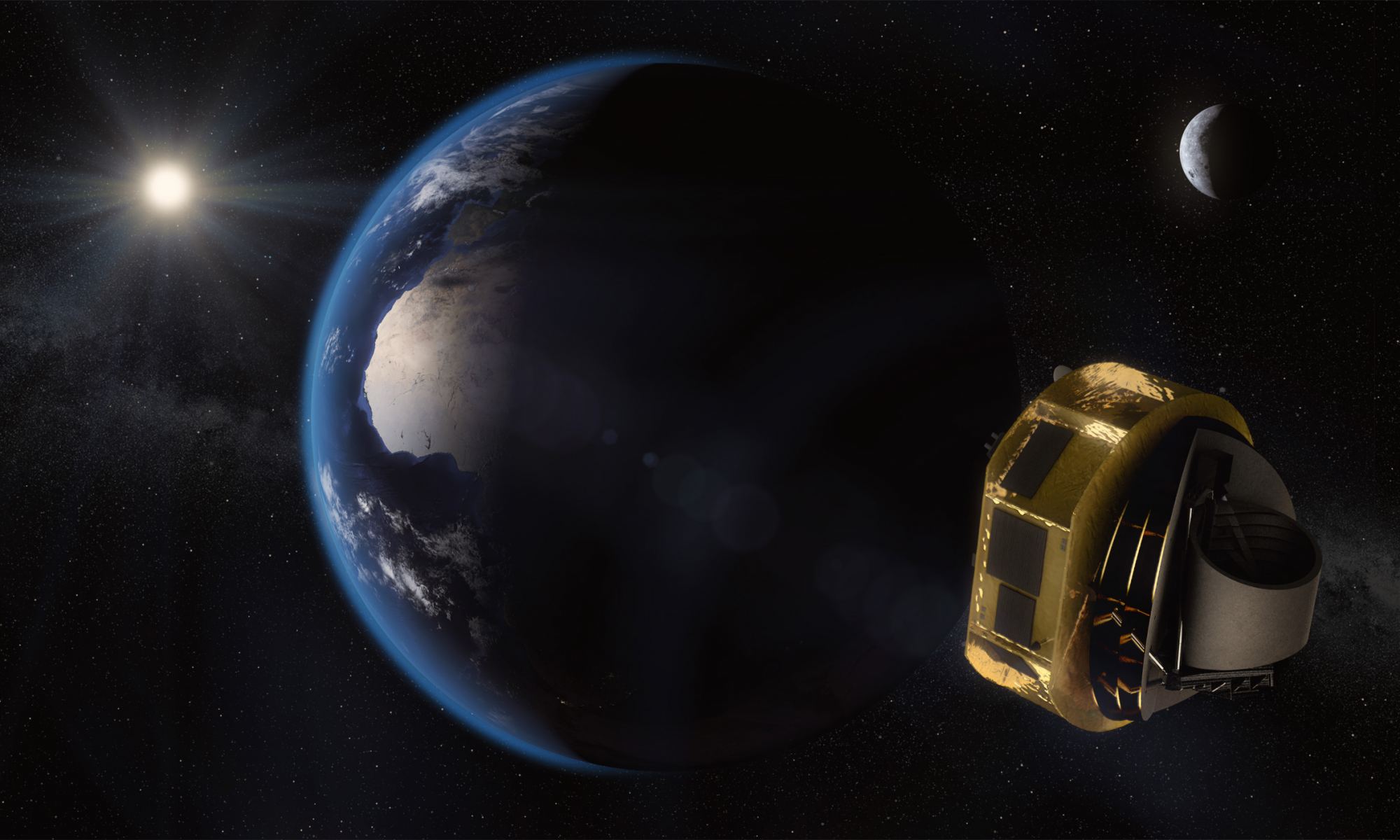
We found our first exoplanets orbiting a pulsar in 1992. Since then, we’ve discovered many thousands more. Those were the first steps in identifying other worlds that could harbour life.
Now planetary scientists want to take the next step: studying exoplanet atmospheres.
The ESA’s ARIEL mission will be a powerful tool.
Continue reading “ESA’s ARIEL Mission Will Study the Atmospheres of More Than 1,000 Exoplanets”With Webb Safely Launched, Focus Shifts to the Ariane 6
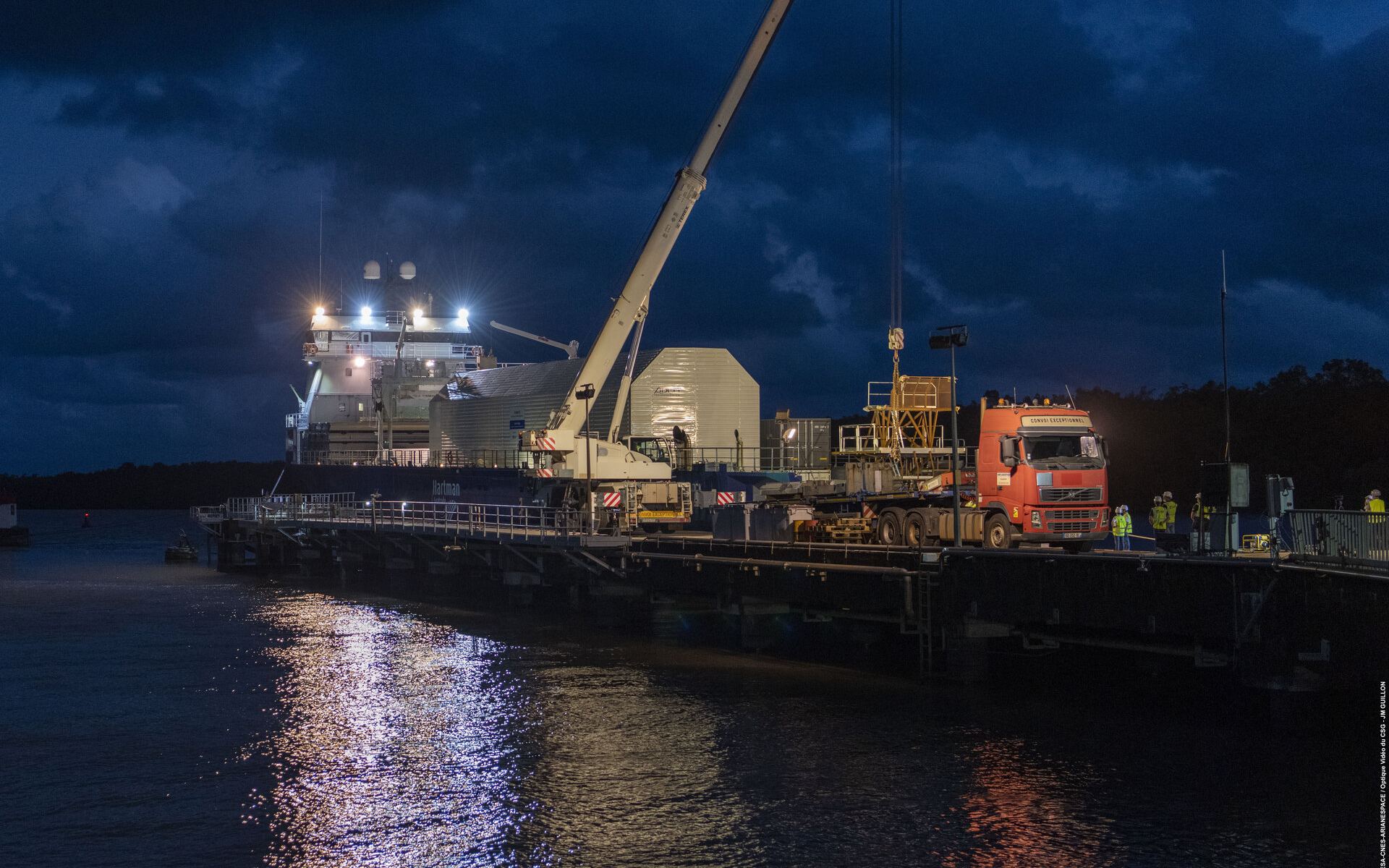
Last month, an Ariane 5 rocket carried the James Webb Space Telescope (JWST) safely to space, the latest of 112 total launches for the European Space Agency’s (ESA) primary workhorse rocket. With a 95.5% success rate, the Ariane 5 has been a reliable ride to space for decades, but its story is about to come to an end. ESA is no longer building new Ariane 5 vehicles, instead developing its next-generation rocket, the Ariane 6, which is intended to provide cheaper access to space. This week, the first completed core stage of a new Ariane 6 rocket arrived at the spaceport outside Korou in French Guiana for testing.
Continue reading “With Webb Safely Launched, Focus Shifts to the Ariane 6”The Bottom of Valles Marineris Seems to Have Water Mixed in With the Regolith

For generations, humans have dreamed of the day when we might set foot on Mars. For many others, the dream has been one of settling on Mars and creating an outpost of human civilization there. Today, it looks as though both of these dreams are getting closer to becoming a reality, as space agencies and the commercial space industry are deep into planning regular crewed missions to the Red Planet. And when planning for long-duration missions to destinations in deep space, a vital aspect is assessing the local environment.
For example, missions to Mars will need to be as self-sufficient as possible, which means using local resources to meet the needs of the mission and astronauts – a process known as in-situ resource utilization (ISRU). According to new data from the ESA-Roscomos ExoMars Trace Gas Orbiter (TGO), the massive equatorial canyon known as Valles Marineris (Valley of Mars) contains vast deposits of ice that have remained hidden to scientists until now.
Continue reading “The Bottom of Valles Marineris Seems to Have Water Mixed in With the Regolith”


